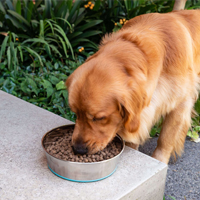To Buy Augmentin Online Visit Our Pharmacy ↓
 Augmentin and Children: Dosage, Safety, and Tips
Augmentin and Children: Dosage, Safety, and Tips
Augmentin is a commonly prescribed antibiotic for children that combines amoxicillin and clavulanate potassium. This duo works together to treat a range of bacterial infections, from ear infections to pneumonia. As a broad-spectrum antibiotic, Augmentin is effective against multiple types of bacteria, making it a handy medication for pediatricians to combat stubborn infections. However, it's important for parents to understand that Augmentin is only effective against bacterial infections and will not aid in fighting viral illnesses such as the common cold or flu.
Parents should also be aware that, like all medications, Augmentin comes with the possibility of side effects. While most children tolerate the drug well, some may experience issues such as diarrhea, rash, or vomiting. It is crucial to complete the full course of prescribed Augmentin, even if the child begins to feel better before the medication is finished. Stopping the antibiotic early can lead to a resurgence of the infection and may contribute to antibiotic resistance, which is a growing concern in the medical community.
Dosing Decoded: Tailoring Augmentin for Tiny Bodies
When prescribing Augmentin for children, pediatricians take into account several variables such as the child's weight, age, and the severity of the infection. Typically, Augmentin dosage for kids is weight-based, ensuring a therapeutic dose that is both safe and effective for their smaller bodies. The medication comes in various forms, including chewable tablets, liquid suspensions, and extended-release formulations, allowing for appropriate dosing even for the youngest patients. It's crucial for caregivers to understand that a child's dose will differ significantly from adult dosages and that strict adherence to the prescribed amount is paramount.
Due to their developing organs and immune systems, children require cautious dosing adjustments to minimize potential risks. Health care providers may adjust the duration or frequency of doses for each child, never exceeding the recommended daily maximum. Proper dosing of Augmentin not only aids in combating the bacterial infection effectively but also decreases the likelihood of side effects. Caregivers must measure liquid doses with precision using a pharmacist-provided syringe or cup, and follow the full course of therapy as skipping doses or incomplete treatment can lead to the development of antibiotic resistance.
Red Light Symptoms: Recognizing Adverse Reactions in Kids
Augmentin, a widely used antibiotic for bacterial infections, can sometimes cause adverse reactions, which parents need to monitor closely. Common side effects include gastrointestinal disturbances such as diarrhea, nausea, and vomiting. Less commonly, children may exhibit skin rashes, which could signify an allergic reaction. It's crucial to differentiate between typical side effects and severe allergic reactions such as hives, breathing difficulties, or facial swelling, which warrant immediate medical attention. Recognizing these 'red light' symptoms early on can prevent further complications and ensure the child's safety.
Parents should be vigilant and contact a pediatrician if they observe less common but more serious reactions, such as persistent diarrhea, signs of liver dysfunction like jaundice, or unusual bruising or bleeding which may indicate a rare reaction affecting blood cells. Behavioral changes, such as increased irritability or lethargy, may also occur and should prompt medical evaluation. Understanding these signs will equip parents to respond promptly to any potential adverse effects, keeping their child's health safeguarded during antibiotic treatment.
Antibiotic Stewardship: Preventing Resistance in Children
The judicious use of antibiotics like Augmentin is paramount in preventing the surge of antibiotic resistance among children. Overprescribing or improper usage of these powerful medications can lead to bacteria evolving to withstand them, rendering treatments less effective and leading to more complicated health issues. To promote antibiotic stewardship, healthcare providers are urged to prescribe antibiotics only when absolutely necessary, and to opt for the narrowest spectrum antibiotic that will effectively treat the infection. In addition, adherence to the recommended duration of therapy is crucial, as premature discontinuation of treatment can also contribute to the development of resistance.
Parents play a vital role in combating antibiotic resistance by following the pediatrician's directives closely. When a child is prescribed Augmentin, it is important for caregivers to ensure the full course of the antibiotic is completed, even if the child starts feeling better before the medication is finished. Avoiding the demand for antibiotics for viral infections, such as the common cold or flu, is another key aspect of stewardship. By being informed about the proper use of antibiotics and the risks associated with overuse, parents can help maintain the efficacy of life-saving medications for future generations.
Crushing the Confusion: Administering Augmentin Correctly
Administering Augmentin to children requires precision and care to ensure effectiveness and minimize the chances of side effects. Liquid formulations are often prescribed for kids and must be shaken well before use to ensure the medication is evenly distributed. Dosages typically depend on the child’s weight and should be measured using the provided syringe or cup for accuracy. It’s imperative to follow the doctor’s instructions regarding how often and for how long the antibiotic should be given. Skipping doses or stopping the medication early can lead to suboptimal outcomes and contribute to antibiotic resistance.
To maintain the integrity of the medication, store it as advised, often in a cool, dry place and use within the time frame recommended. Some forms of Augmentin should be kept refrigerated, while others should be stored at room temperature. Parents must also be attentive to their child’s hydration levels, ensuring they take the antibiotic with an appropriate amount of liquid, and encourage their kids to drink water throughout the treatment period to aid absorption and reduce potential gastrointestinal discomfort. Being meticulous with these details can significantly smooth out the recovery process.
Beyond the Prescription: Tips for a Smooth Recovery
When your child is on Augentin, recovery involves more than just medication adherence. Ensuring your child maintains a balanced diet rich in nutrients can bolster their immune system, aiding in the fight against infection and promoting healing. Hydration is also key; plenty of fluids can help to flush out toxins and support kidney function, which is essential when taking antibiotics. Comforting foods such as broths and soups can be particularly soothing and easy to digest for children feeling unwell.
It's important to understand that rest is a crucial component of recovery. Encourage quiet activities that don't overexert your child, and make sure they get ample sleep to allow their body to repair itself. Probiotics may be recommended to restore gut health, which can be disrupted by antibiotic treatment. Finally, follow all instructions for the full course of the medication, even if your child starts to feel better, to ensure the infection is fully eradicated and to minimize the risk of resistance.







